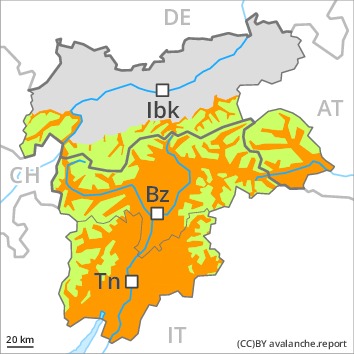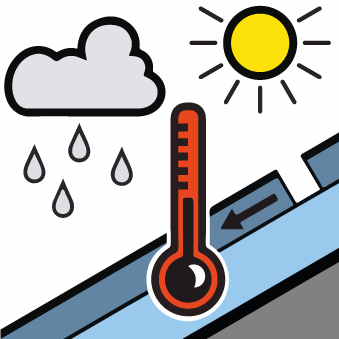AM

Danger level
 | 2600m
|
Avalanche Problem
PM

Danger level
 | 2600m
|
Avalanche Problem
Gliding avalanches are the main danger. They can be released at any time of day or night.
As a consequence of warming during the day and solar radiation more wet and gliding avalanches are to be expected. This applies especially on steep south facing slopes below approximately 2600 m, as well as on steep east and west facing slopes below approximately 2400 m. Avalanches can release the wet snowpack and reach large size. Exposed parts of transportation routes are endangered in isolated cases.
Moist avalanches can be released by a single winter sport participant. This applies in particular in the afternoon. Backcountry tours should be concluded timely.
Dry avalanches can additionally be released in deeper layers, especially on extremely steep shady slopes above approximately 2300 m at transitions from a shallow to a deep snowpack. Such avalanche prone locations are very rare.
Snowpack
dp.2: gliding snow
dp.10: springtime scenario
Outgoing longwave radiation during the night will be good over a wide area. As a consequence of falling temperatures a crust will form on the surface during the night. The surface of the snowpack will freeze to form a strong crust and will soften later than the day before. In its middle, the snowpack is moist, in particular on steep sunny slopes below approximately 2600 m.
Isolated avalanche prone weak layers exist in the centre of the snowpack on west, north and east facing slopes.
In the north up to 5 cm of snow will fall. This applies during the second half of the night.
Tendency
Increase in danger of wet avalanches as a consequence of warming.











